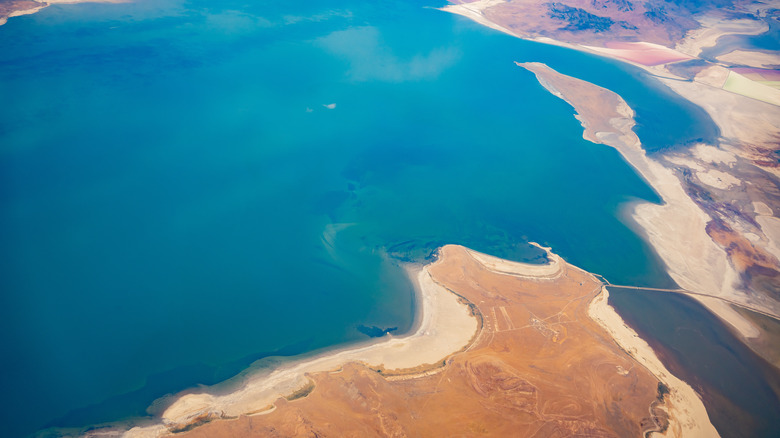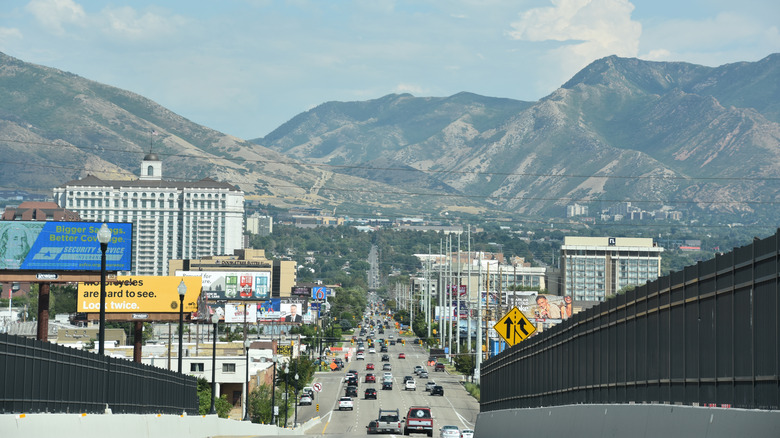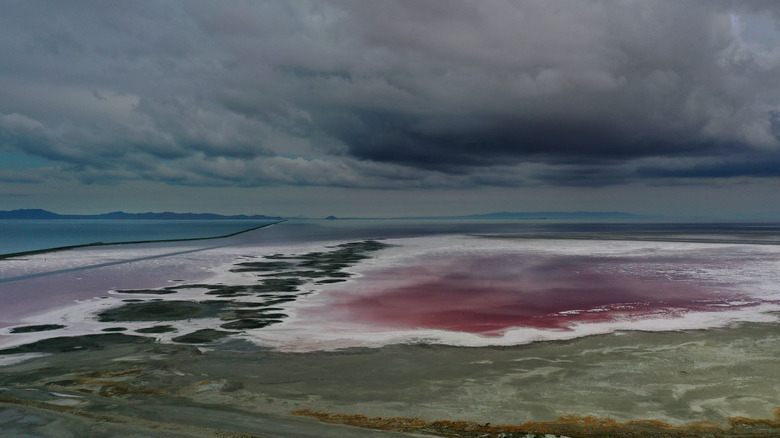Why The Utah's Great Salt Lake Is In Danger Of Disappearing
The Great Salt Lake in Utah is famous for many things, including how big it is. Most of the time, the lake covers some 1,700 square miles. However, that number can vary due to variations in water levels. For example, in 1988, the lake covered a lot of land — about 3,300 square miles — but in 1963, it only covered 950 square miles (via Visit Salt Lake).
While the size of the lake is known to fluctuate, recent changes indicate that it is in danger of disappearing. The threat is so dire that scientists claim that if nothing is done soon, the lake could dry out in five years (via Science Alert). As of January 2023, the lake was reported to be 19 feet below its average level. Since 1850, the lake has lost 73% of its water and more than half of its surface area, according to a report published by Brigham Young University (BYU). So what is causing the Great Salt Lake to disappear?
Population growth
One of the biggest threats to the Great Salt Lake is excessive use, per BYU's report. According to the European Space Agency (ESA), the population of Utah is growing quickly, and it is expected to increase by almost 50% by 2060. And all those people need water.
While the population doesn't get its water directly from the Great Salt Lake, it does get it from the tributaries that flow into it. The Salt Lake Tribune reports that rivers and streams that used to flow into the lake have been redirected for other uses. BYU reports that in the last three years, the lake has received less than one-third of the water it used to get from natural sources. One worrisome statistic from the Salt Lake Tribune showed that the lake didn't receive any water from the Bear River for four months in 2021. To put that into perspective, the Bear River supplies the lake with about 60% of its water (via the Audubon Society).
Drought conditions
The Earth's climate is another reason why the Great Salt Lake is in peril. PBS reports that a drought is also to blame. NASA's Earth Observatory explains that on average, about 31% of the water in the lake comes from rain and snowfall. With less rain and water that is evaporating faster than it can be replaced upsets the natural balance of the ecosystem. For one, the water becomes saltier, which endangers local wildlife. Dust blowing from the dry lakebed can even release toxins, such as arsenic, into the air, according to the European Space Agency (ESA).
Things are so bad that the authors of the BYU report are calling for the state's governor to implement a watershed emergency with a focus on returning the lake to its previous levels before it dries up. In addition, they ask businesses, universities, farmers, and residents to reduce outdoor water use until the lake can be restored.


